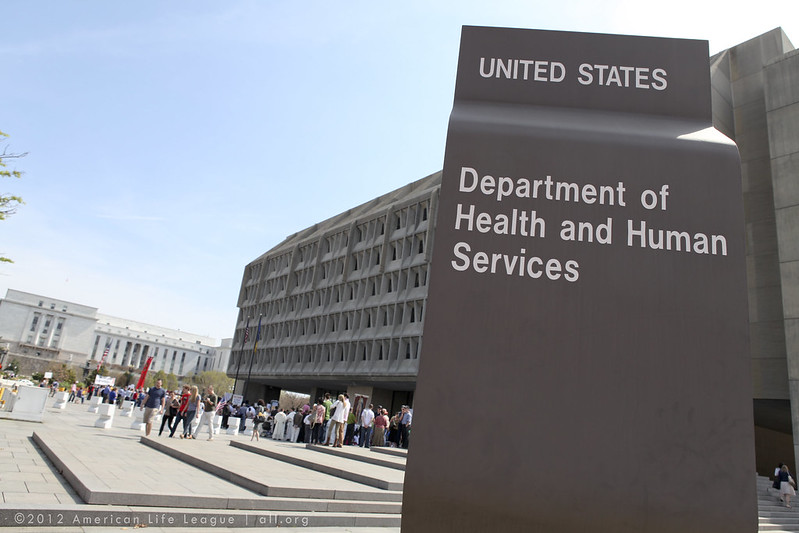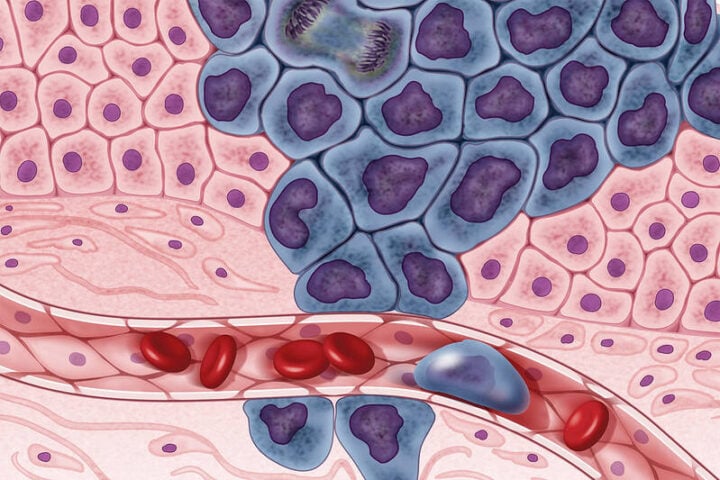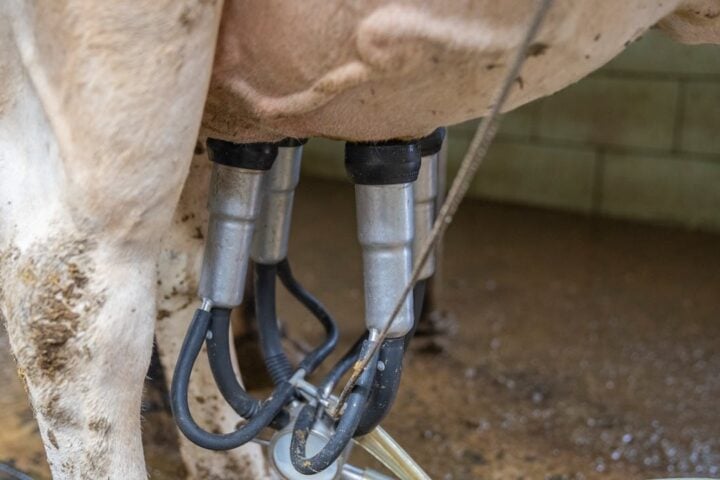A sweeping plan to slash the Department of Health and Human Services (HHS) workforce by over 10,000 employees has hit a wall amid growing backlashes. The controversial restructuring effort, which aimed to reduce HHS staff from 82,000 to 62,000, was temporarily shelved following intense scrutiny over its implementation process and leadership decisions.
The layoff plan targeted major public health agencies with specific cuts: 3,500 positions at the Food and Drug Administration (FDA), 2,400 at the Centers for Disease Control and Prevention (CDC), 1,200 at the National Institutes of Health (NIH), and 300 at the Centers for Medicare & Medicaid Services (CMS). These cuts were projected to save approximately $1.8 billion annually from HHS’s $1.7 trillion budget.
The DOGE Factor
Brad Smith, who leads the Department of Government Efficiency (DOGE) at HHS, now stands at the center of the controversy. According to multiple reports, Smith and his top aide Rachel Riley maintained an unusually secretive approach, withholding critical details of the master layoff plan from career staff and department heads.
This lack of transparency created a chaotic situation where senior leadership discovered expected layoffs through news reports rather than internal communications. The backlash prompted HHS chief of staff Heather Flick to intervene, pausing the reduction-in-force (RIF) notices while data was rechecked over the weekend.
“The isolationist behavior has prompted a rare internal revolt within DOGE,” one HHS source told Politico.
Conflict of Interest Allegations
Particularly troubling are allegations that Smith attempted to shield CMS from severe cuts despite the agency being part of the overall reduction strategy. Critics point to Smith’s ties to Main Street Health, a healthcare provider regulated by CMS, as a potential conflict of interest that undermines the fairness of the process.
The perceived favoritism has deepened internal tensions and raised serious questions about the reorganization’s impartiality. DOGE staff reportedly gained access to sensitive systems, including Medicare/Medicaid payment databases and federal payroll data, further stoking concerns about information security.
Public Health Implications
Former FDA Commissioner Robert Califf offered a stark assessment, stating that “the FDA as we’ve known it is finished” after key leaders with deep regulatory expertise were dismissed. In a LinkedIn post, Califf expressed concern about how the new leadership would attempt to “put ‘Humpty Dumpty’ back together again.”
The potential impact extends beyond administrative reshuffling:
- FDA cuts could delay food safety inspections and new drug approvals
- CDC reductions might compromise infectious disease tracking capabilities
- NIH layoffs threaten ongoing research, including vaccine safety studies
- SAMHSA staff cuts could affect mental health services, including the 988 suicide hotline
The National Institute for Occupational Safety and Health (NIOSH) faces particularly severe cuts, with 873 staff positions—representing two-thirds of its workforce—slated for elimination, potentially weakening workplace safety regulations nationwide.
Similar Posts
Agency Consolidation
The reorganization goes beyond staff reductions. HHS plans to merge several agencies to create a new “Administration for a Healthy America” by combining the Health Resources and Services Administration, Substance Abuse and Mental Health Services Administration, the Office of the Assistant Secretary for Health, and the Agency for Toxic Substances and Disease Registry. The plan also calls for absorbing NIOSH from the CDC.
These structural changes aim to eliminate redundancies, but critics worry about disruptions to critical public health functions during the transition.
Global Health Consequences
The restructuring has international implications as well. Cuts to the President’s Emergency Plan for AIDS Relief (PEPFAR) have jeopardized the rollout of Gilead’s HIV prevention drug Lenacapavir in developing nations. Additionally, USAID’s termination of contraceptive funding risks 17.1 million unintended pregnancies and potentially 5.2 million unsafe abortions annually.
Brian Ronholm of Consumer Reports warned that “cuts endanger food safety and public health,” while former CDC Director Tom Frieden criticized reductions in tobacco prevention programs as a “gift to Big Tobacco.”
Legal Challenges Mount
The American Federation of Government Employees (AFGE) has filed lawsuits against the Office of Personnel Management over “pretextual firings” of probationary workers. State attorneys general have also initiated legal action, arguing the layoffs violate civil service protections and endanger public health.
Senator Patty Murray (D-Wash.) warned the cuts would turn HHS into the “Department of Disease,” citing layoffs of VA researchers studying cancer and burn pit exposure.
Employee Experience
The human toll became evident on April 1, when layoffs began with employees locked out of buildings and receiving termination emails. Some described the process as a “bloodbath.” The chaos prompted high-profile resignations, including FDA Deputy Commissioner Jim Jones and ARPA-H Director Renee Wegrzyn.
One significant development came when RFK Jr. replaced NIH Director Jeanne Marrazzo with Dr. Jay Bhattacharya, known for his criticism of COVID-19 lockdowns. Meanwhile, after protests, the Indian Health Service reversed plans to lay off 950 nurses.
Historical Context
HHS has undergone several reorganizations throughout its history—from its origins as part of the Federal Security Agency to its transformation into the Department of Health and Human Services in 1979. However, the scale and implementation of the current restructuring are unprecedented.
Similar cuts attempted during the previous Trump administration were later reversed under President Biden. The current efforts align with Project 2025, a conservative blueprint for shrinking federal agencies.
As legal battles unfold and revised timelines are developed, the full impact of this reorganization remains to be seen. The delay provides time for reassessment, but many public health experts worry that even scaled-back cuts could compromise the quality and speed of essential health services for millions of Americans.
Frequently Asked Questions
The Department of Health and Human Services (HHS) proposed reducing its workforce by over 10,000 employees, from 82,000 to 62,000 staff members. This represents a reduction of approximately 24% of the total workforce. The cuts would specifically include 3,500 positions at the FDA, 2,400 at the CDC, 1,200 at the NIH, and 300 at CMS, among others. These cuts were projected to save about $1.8 billion annually from HHS’s overall $1.7 trillion budget.
Brad Smith, who leads the Department of Government Efficiency (DOGE) at HHS, is primarily responsible for implementing the workforce reductions. Smith and his top aide Rachel Riley have been criticized for their secretive approach, as they reportedly withheld critical details of the layoff plans from career staff and department heads. This lack of transparency created confusion within the department and prompted HHS chief of staff Heather Flick to intervene, temporarily pausing the reduction-in-force notices.
The cuts could have significant impacts on public health services across multiple agencies. FDA reductions could delay food safety inspections and new drug approvals. CDC cuts might compromise infectious disease tracking capabilities. NIH layoffs threaten ongoing research, including vaccine safety studies. SAMHSA staff reductions could affect mental health services, including the 988 suicide hotline. Additionally, the National Institute for Occupational Safety and Health (NIOSH) faces particularly severe cuts with 873 staff positions—representing two-thirds of its workforce—slated for elimination, potentially weakening workplace safety regulations nationwide.
Yes, there are allegations of conflicts of interest in the implementation process. Critics point to Brad Smith’s ties to Main Street Health, a healthcare provider regulated by CMS, as a potential conflict of interest. Smith allegedly attempted to shield CMS from severe cuts despite the agency being part of the overall reduction strategy. This perceived favoritism has deepened internal tensions and raised questions about the reorganization’s impartiality. Additionally, DOGE staff reportedly gained access to sensitive systems, including Medicare/Medicaid payment databases and federal payroll data, further raising concerns about information security.
The reorganization plan goes beyond staff reductions to include significant structural changes. HHS plans to merge several agencies to create a new “Administration for a Healthy America” by combining the Health Resources and Services Administration, Substance Abuse and Mental Health Services Administration, the Office of the Assistant Secretary for Health, and the Agency for Toxic Substances and Disease Registry. The plan also calls for absorbing NIOSH from the CDC. These changes aim to eliminate redundancies but have raised concerns about potential disruptions to critical public health functions during the transition period.
Several legal challenges have been mounted against the proposed cuts. The American Federation of Government Employees (AFGE) has filed lawsuits against the Office of Personnel Management over what they describe as “pretextual firings” of probationary workers. Additionally, multiple state attorneys general have initiated legal action, arguing that the layoffs violate civil service protections and endanger public health. These legal battles, along with internal resistance and public backlash, have contributed to the temporary pause in implementing the workforce reduction plan.

















